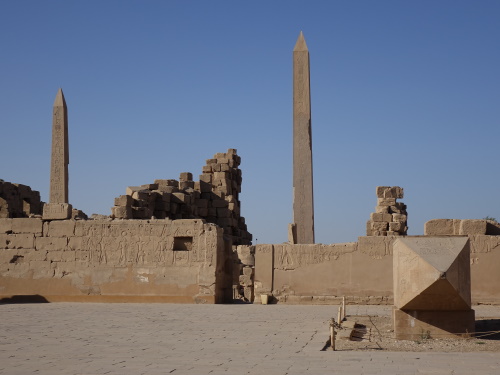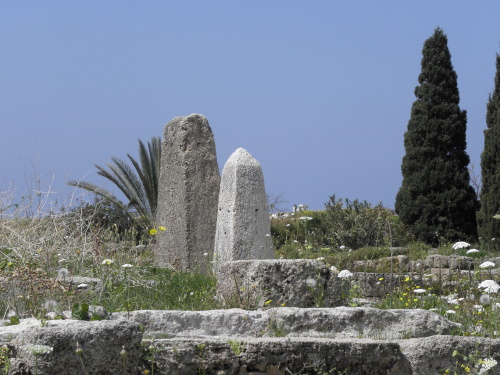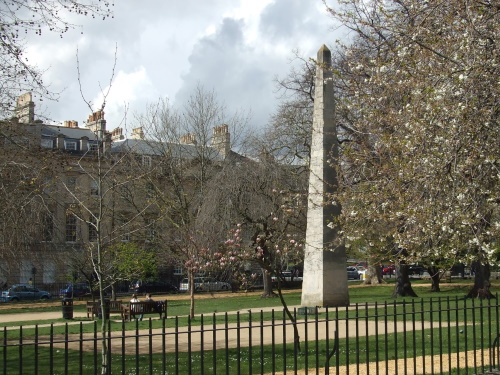Blog Connections
Obelisks
I am preparing 4 trips simultaneously at the moment, doing my homework for the final 4 months of this year. One of these trips is a return visit to Rome. It is organized by people I know from my Art History studies – so I do not have to do any practical planning and can just follow someone else’s lead for once! I did my usual website preparation though, going through the connections and adding new explanations where necessary. Regarding Rome, the Obelisks stood out to me: apparently, the city is home to no less than eight ancient Egyptian and five ancient Roman obelisks.
An obelisk is a very specific kind of monument: four-sided, narrow tapering, ending in a pyramid-like shape at the top. The updated connection list now shows 30 WHS with obelisks within their core zones. Despite their considerable size, obelisks seem to have been moved around a lot!

Ancient obelisks
The Ancient Egyptians ‘invented’ the obelisk, so any history should start with them. Ancient Thebes still has one standing on the left-hand side of the portal of the Luxor Temple. It dates from the reign of Ramesses II (c. 1250 BC). At the Karnak temple complex, there are the second largest remaining obelisk at the Precinct of Amun-Re (of Hatshepsut), the obelisk of Thutmosis I, and the obelisk of Seti II. The largest obelisk known lies unfinished in the quarries at Aswan.
Obelisks also occur in countries nearby. Byblos in Lebanon has the Temple of the Obelisks (photo 2): a number of obelisks and standing stones located in a court. “The Abishemu obelisk has been interpreted to include a dedication to Resheph, a Canaanite war god, although this is disputed. Another obelisk has a hieroglyphic inscription Middle Bronze Age king of Byblos Ibishemu, praising the Egyptian god Herysha." The site of Petra has a tomb with four pyramidal obelisks, built as funerary symbols by the Nabataeans in the 1st century BC.
Ancient obelisks abroad
The Romans were the first that started dragging Egyptian obelisks from their original locations to Europe. In Rome alone, there are eight ancient Egyptian obelisks.
Some eventually moved on beyond Rome, as the Popes liked them too: Vatican City got one in the middle of St Peter Square, "traditionally known as Caligula’s Obelisk as it was Caligula who in 37 A.D took the monument from Alexandria ... The Vatican Obelisk was moved to its current location between 1585 and 1586 under Pope Sixtus V ". The Boboli obelisk (at one of the Medici Gardens) was moved in the 18th century from Rome to Florence (it originally came from Aswan / Heliopolis). The Obelisk of Urbino came from a temple of Isis in Egypt; it was moved to Urbino in 1737 to celebrate Pope Clement XI.
The Obelisk of Theodosius in Istanbul was brought there on the orders of the eponymous Roman emperor. It came from Karnak. Finally, the Luxor Obelisk in Paris was reerected there in 1836 by King Charles X. It is the right-hand half of the above-mentioned obelisk in Luxor that remains in place.
Roman obelisks
The Romans apparently liked them so much that they started constructing original obelisks as well. Five can be found in Rome. There’s a 4th-century Roman obelisk in Arles. A special mention is the one in the Longobard town of Benevento: it dates from 88/89 AD, was carved from red Aswan granite and flanked the entrance of a newly constructed temple to the Egyptian goddess Isis.

Modern obelisks
It took until the 16th century for the obelisk fashion to reappear. They were erected as memorials in city centers and as decorations in palace gardens.
The architects of the monumental palaces and gardens were never shy of adding some orientalist touches. Aranjuez, Lednice, Schönbrunn, Sanssouci in Potsdam and Studley Royal Park all have an obelisk. Some even have decorative hieroglyphs without any meaning. The very small ones at Blenheim Palace and Villa d'Este (in a small pool floats a boat with a mast in the shape of an obelisk) might be considered just follies.
Memorial obelisks came into fashion in the 18th century, and continue to appear liberally mainly in the Americas due to their fondness for neo-classicism. A notable example includes the gravestone of Thomas Jefferson at Monticello. Often these obelisks were erected to commemorate people or events, such as the 17 miners that died in a fire in Idrija and the World War I memorial designed by Jože Plečnik at Prague Castle.

Finally, I removed some from our original connection that are not 'true' obelisks, although they are sometimes named as such. The ones at Aksum and Cienfuegos are stelae (lacking the pyramidal top), as is the Tello obelisk from Chavín. The Guglia dell'Immacolata in Naples is a baroque spire. We had the Santa Eulalia Obelisk in Merida as well but I have not found a photo to see how its ‘obelisk’ looks.
Do you know of any other WHS where an obelisk can be seen?
Els - 21 August 2022
Comments
Meltwaterfalls 24 August 2022
Bahá’í Temples: Carmel West: Place of Revelation
This is a small open space, where in 1891 Bahá’u’lláh composed the “Tablet of Carmel”, the charter of the Bahá’í world administrative centre. It is marked by an obelisk marking the site of a future temple.
https://en.wikipedia.org/wiki/Bah%C3%A1%CA%BC%C3%AD_World_Centre_buildings#Site_of_future_temple
Els Slots 24 August 2022
And thanks to meltwaterfalls: 7 new ones in the UK
Els Slots 22 August 2022
Three more: Struve Geodetic Arc, Canal du Midi, Fontainebleau. Thanks to Jasam. See the connection page for details.
Els Slots 21 August 2022
Update on the Mérida mystery: the obelisco de santa eulalia is a column, not an obelisk. But, there is another obelisk in Mérida, and it IS in the core zone (thanks Solivagant and Jasam for the updates).
Els Slots 21 August 2022
Have added the one in Wörlitz!